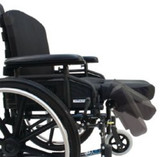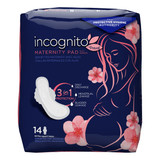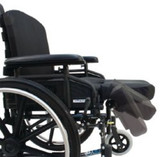A Comprehensive Guide to Manual Wheelchairs and Transport Wheelchairs
A Comprehensive Guide to Manual Wheelchairs and Transport Wheelchairs
When navigating the world of mobility aids, understanding the distinctions between manual wheelchairs and transport wheelchairs is crucial.
Manual wheelchairs are typically self-propelled, allowing users to move independently by pushing the wheels. They come in various forms, each designed to cater to different needs and preferences.
Transport wheelchairs, on the other hand, are built for ease of transportation with caregiver assistance. These models are generally lightweight and compact, making them ideal for travel and short-term use.
Mobility aids like these play a significant role in enhancing the quality of life for individuals with limited mobility. This guide aims to provide a comprehensive understanding of both manual and transport wheelchairs, equipping you with the knowledge needed to make an informed decision tailored to your unique situation.
Understanding Manual Wheelchairs
Types of Manual Wheelchairs
Manual wheelchairs provide versatile mobility solutions, either through self-propulsion or with caregiver assistance. Different types cater to various needs and preferences.
1. Standard Manual Wheelchair
A standard manual wheelchair is designed for daily use and typically features:
Large back wheels: Allow users to propel themselves.
Swing-away footrests:Facilitate easier transfers in and out of the chair.
Multiple seat sizes: Accommodate different body types.
These wheelchairs are robust and reliable, suitable for individuals who need a consistent, everyday mobility aid.
2. Lightweight Manual Wheelchair
Lightweight manual wheelchairs stand out due to their ease of use and portability. Key benefits include:
Lighter materials: Often made from aluminum or other lightweight metals.
Easier to fold and transport: Ideal for users who frequently move between locations.
Enhanced maneuverability: Less effort required for propulsion.
This type is especially beneficial for those who need to lift their wheelchair into vehicles or navigate tight spaces regularly.
3. Ultra-Lightweight Manual Wheelchair
Ultra-lightweight manual wheelchairs take portability a step further. Highlights include:
Weight under 20 lbs: Significantly lighter than standard options.
Compact folding mechanisms: Simplifies storage and travel.
Greater ease of transport: Perfect for air travel or long-distance trips.
Their minimal weight makes them a top choice for active individuals who prioritize convenience without sacrificing functionality.
Types of Manual Wheelchairs
1. Heavy Duty Manual Wheelchair
Heavy duty manual wheelchairs are designed to support higher weight capacities, often up to 700 lbs. Constructed from durable materials such as reinforced steel or aluminum, these wheelchairs offer enhanced strength and stability. They feature larger seat widths and depths, ensuring comfort for users requiring extra space. The robust design also includes heavy-duty casters and wheels to handle various terrains, making them ideal for both indoor and outdoor use.
2. Complex Manual Wheelchair
Complex manual wheelchairs are highly customizable to meet specific medical needs. These wheelchairs come with advanced positioning options such as tilt-in-space and recline functions, which assist in pressure relief and better posture alignment. Additional features may include adjustable seat depth, backrests, and leg rests. These customizations cater to individuals with conditions like cerebral palsy or spinal cord injuries, allowing a tailored fit that enhances comfort and mobility.
3. Sports Wheelchair
Sports wheelchairs are engineered for athletic activities like basketball, tennis, and racing. They feature specialized wheels that provide better maneuverability and speed on different surfaces. Design elements include a lower center of gravity for stability, anti-tip bars for safety, and ergonomic seating for enhanced performance. Often made from lightweight materials like titanium or aluminum, these wheelchairs ensure agility without compromising on durability.
Each type of manual wheelchair serves distinct purposes, whether you need a durable model for greater weight support or a specialized design for athletic pursuits.
Understanding Transport Wheelchairs
Transport wheelchairs, known as caregiver-operated mobility aids, are essential for individuals who need assistance moving from one place to another. These wheelchairs prioritize lightweight design and portability, making them ideal for quick trips and travel.
Types of Transport Wheelchairs
1. Folding Transport Wheelchair
Folding transport wheelchairs offer convenience for storage and transportation. Their compact design allows you to fold them quickly, fitting easily into car trunks or closets. This makes them an excellent choice for those who frequently travel by car or have limited storage space at home.
Key features:
Lightweight frame: Typically made from aluminum or other light materials.
Foldable structure: Easy to collapse and store.
Swing-away footrests: Enhances user comfort and simplifies the transfer process.
2. Travel Transport Wheelchair
Designed specifically for easy travel on public transport or in vehicles, travel transport wheelchairs combine durability with lightweight construction. These models are perfect if you need a reliable wheelchair that can withstand the rigors of frequent travel.
Key features:
Compact size: Fits in tight spaces such as airplane aisles or bus seats.
Durable wheels: Built to handle various terrains, including pavements and uneven surfaces.
Quick-release mechanisms: Simplifies the process of disassembling and reassembling the wheelchair.
3. Reclining Transport Wheelchair
For longer journeys, reclining transport wheelchairs provide added comfort features. These models allow users to adjust the backrest angle, offering a more relaxed seating position which is beneficial for those who may need to spend extended periods in their wheelchair.
Key features:
Reclining backrest: Adjustable to different angles for optimal comfort.
Enhanced padding: Extra cushioning on the seat and backrest.
Elevating leg rests: Supports better leg positioning and reduces pressure sores.
Transport wheelchairs are designed with both user comfort and caregiver ease in mind. Each type offers unique benefits tailored to specific needs, ensuring you find the right fit for your lifestyle.
Types of Transport Wheelchairs (contd.)
Ultra-Light Transport Wheelchair
Ultra-light transport wheelchairs are designed for ease of use and convenience. These models typically weigh less than 15 lbs, making them extremely portable. Key benefits include:
Lightweight Design: Easier for caregivers to maneuver and lift.
Compact Folding: Ideal for storage in small spaces.
Enhanced Mobility: Perfect for travel on public transport or in vehicles.
These features make ultra-light transport wheelchairs an excellent choice for those needing a highly portable, caregiver-operated mobility solution.
Key Differences Between Manual and Transport Wheelchairs
Understanding the key differences between manual and transport wheelchairs can help you make an informed decision about which type is best suited for your needs. Here are the main factors to consider:
Weight and Construction
Manual Wheelchairs:Typically heavier due to their robust frame and larger wheels. Standard models can weigh between 30-45 lbs, while ultra-lightweight versions can be under 20 lbs.
Transport Wheelchairs: Designed to be lightweight and easy to carry, usually weighing around 15-25 lbs. They have smaller wheels and a simpler frame construction.
Maneuverability
Manual Wheelchairs: Offer better maneuverability, especially in tight spaces. The larger rear wheels provide more control and can handle various terrains.
Transport Wheelchairs:Generally less maneuverable due to smaller wheels. Best suited for smooth, flat surfaces like indoor floors or paved pathways.
User Independence vs. Caregiver Reliance
Manual Wheelchairs: Allow for greater independence as users can self-propel. Ideal for individuals who have sufficient upper body strength.
Transport Wheelchairs: Require a caregiver for movement, making them suitable for users who cannot propel themselves or need assistance during transport.
This clear differentiation helps you understand which type of wheelchair might be best suited for your needs based on weight, maneuverability, and the level of independence desired.
Considerations When Choosing the Right Wheelchair Type For You
Selecting a wheelchair type involves assessing various factors to ensure it meets your specific needs. One primary consideration is physical abilities. If you or your loved one has limited mobility but can still propel themselves, a manual wheelchair may be the best option. These wheelchairs provide more independence and control.
For those requiring assistance from a caregiver, transport wheelchairs offer a lighter weight alternative. They are easier for caregivers to handle and often feature comfort options like adjustable seat width.
Factors to Consider:
Physical Abilities:Can the user self-propel, or will they need assistance?
Does the user have specific medical requirements that necessitate customization?
Portability Needs:Travel Frequency: How often do you plan on traveling with the wheelchair?
Public Transport Use: Will you frequently use public transport systems like buses or trains? In such cases, compact and foldable designs are beneficial.
Key Features:
Comfort: Look for features such as seat width adjustment options to ensure proper fit and comfort.
Weight: Lightweight models are easier to maneuver and transport.
Durability: Consider heavy-duty options if higher weight capacity is needed.
Customization: Complex manual wheelchairs offer various customization options for medical needs.
Lifestyle Preferences:
Evaluate how the wheelchair will fit into daily life. For example, if you often travel by car, a folding transport wheelchair might be ideal. On the other hand, if engaging in sports activities is important, a sports wheelchair designed for athletic use would be more suitable.
Choosing the right wheelchair requires careful consideration of these factors to ensure it aligns with both physical requirements and lifestyle preferences.
Conclusion
Making an informed decision is crucial when choosing the right wheelchair type. Whether you opt for a manual wheelchair that offers greater independence or a transport wheelchair designed for caregiver assistance, understanding your mobility needs and lifestyle preferences ensures enhanced comfort and convenience. A Comprehensive Guide to Manual Wheelchairs and Transport Wheelchairsprovides the insights needed to select the best option tailored to individual requirements. Investing time in evaluating features and benefits will significantly improve your or your loved one's quality of life.
FAQs (Frequently Asked Questions)
What are the main types of manual wheelchairs?
The main types of manual wheelchairs include standard manual wheelchairs, lightweight wheelchairs, ultra-lightweight wheelchairs, heavy duty manual wheelchairs, complex manual wheelchairs, and sports wheelchairs. Each type has unique features catering to different needs and preferences.
What is the difference between self-propelled and caregiver-assisted manual wheelchairs?
Self-propelled manual wheelchairs allow users to navigate independently using their own strength to move the wheelchair. In contrast, caregiver-assisted manual wheelchairs require someone else to push the chair, making them suitable for individuals who may not have the physical ability to propel themselves.
What are transport wheelchairs and how do they differ from manual wheelchairs?
Transport wheelchairs are designed primarily for caregiver operation, featuring a lightweight design that makes them easy to maneuver. Unlike manual wheelchairs, which can be self-propelled, transport wheelchairs rely on caregivers for mobility and are often more compact for easier storage and travel.
What should I consider when choosing between a manual wheelchair and a transport wheelchair?
When choosing between a manual wheelchair and a transport wheelchair, consider factors such as physical abilities, lifestyle preferences regarding portability, the need for caregiver assistance, and specific comfort features like seat width adjustments. Assess how often you will travel with the wheelchair and in what environments.
What are some benefits of lightweight and ultra-lightweight wheelchairs?
Lightweight and ultra-lightweight wheelchairs offer significant benefits in terms of portability and ease of use. They are easier to lift and maneuver, making them ideal for users who need to transport their wheelchair frequently or those who travel regularly. Ultra-lightweight models also provide advantages for storage.
How can I enhance my mobility through informed decision-making when selecting a wheelchair?
Enhancing mobility through informed decision-making involves understanding your specific needs, assessing physical capabilities, exploring various wheelchair options available today—whether manual or transport—and considering factors like weight capacity, comfort features, and lifestyle compatibility. This ensures you choose the right type of wheelchair that meets your individual requirements.
Recent Posts
-
Wheelchair or Transport Chair?
Choosing between a wheelchair or transport chair requires understanding the unique features and purp …Dec 20th 2024 -
Incontinence Pads
Understanding Incontinence Pads for Effective Urinary Incontinence ManagementIncontinence pads are s …Dec 15th 2024 -
A Comprehensive Guide to Manual Wheelchairs and Transport Wheelchairs
A Comprehensive Guide to Manual Wheelchairs and Transport WheelchairsWhen navigating the world of mo …Nov 12th 2024



